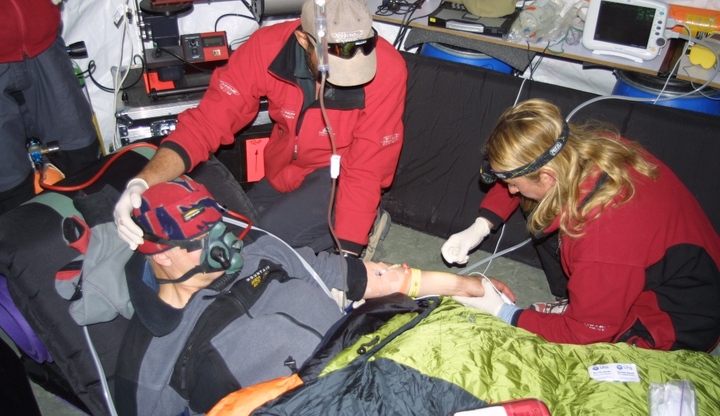From mountainside to bedside
Imagine an intensive care patient short of oxygen, fighting for breath, lungs filling with fluid, brain swelling, struggling to stay alive. The mountaineer battling towards the summit of Everest knows exactly how that feels.
Oxygen: the key to life
We depend on air for survival; more specifically we depend on oxygen. Starve the brain of oxygen and damage soon becomes irreparable. Indeed all major organs - the heart, the lungs, the liver, the kidneys - will begin to malfunction and eventually fail without properly oxygenated blood.
Quite simply without oxygen we die.
Low oxygen levels are a critical factor in intensive care patients. In particular, diseases of the heart and lungs, and severe infections prevent adequate amounts of oxygen reaching the cells.
Our research takes lessons learnt in extreme low oxygen environments, including that found on the summit of Mount Everest, and bring them back to the bedside of the intensive care unit (ICU).
Dangerously low levels of oxygen are also a fundamental problem in blue babies, children with heart and lung diseases (such as Cystic Fybrosis) and in adults with conditions like chronic bronchitis, emphysema and ARDS (a condition common in intensive care patients).
A natural laboratory
The summit of Everest is, by extraordinary coincidence, exactly at the limit of human ability to withstand low oxygen levels. Indeed for many years, doctors and scientists believed that it would be impossible to climb Everest without supplementary oxygen. In 1978 Reinhold Messner proved the contrary and, since then, over 100 individuals have ascended the mountain without supplemental oxygen. However, if the mountain was a few metres higher such feats would be impossible.
Accordingly, the summit of Everest is a unique natural laboratory for the study of the effects of extremely low oxygen levels. Although it has been possible to simulate low oxygen in specially-designed, low-pressure chambers, studies are expensive and produce variable results that have not always been supported by field studies. Further, it takes the subjects just as long to acclimatise as mountaineers.
The professional team
The Xtreme Everest medical research programme is an immense personal and professional challenge for everyone involved. The team are dedicated to studying the medicine and physiology of extreme environments and specialising in intensive care and anaesthesia, caring every day for the critically ill.
The team believe that the knowledge they have gained from risking their own lives to conduct experiements in the extreme 'laboratory' of Everest and elsewhere will bring results, from the mountainside to the bedside, that will improve and save the lives of many.
The life and death drama is evident, the human interest and value to humanity substantial.
Written by Dr Kevin Fong, Associate Director of CASE Medicine





